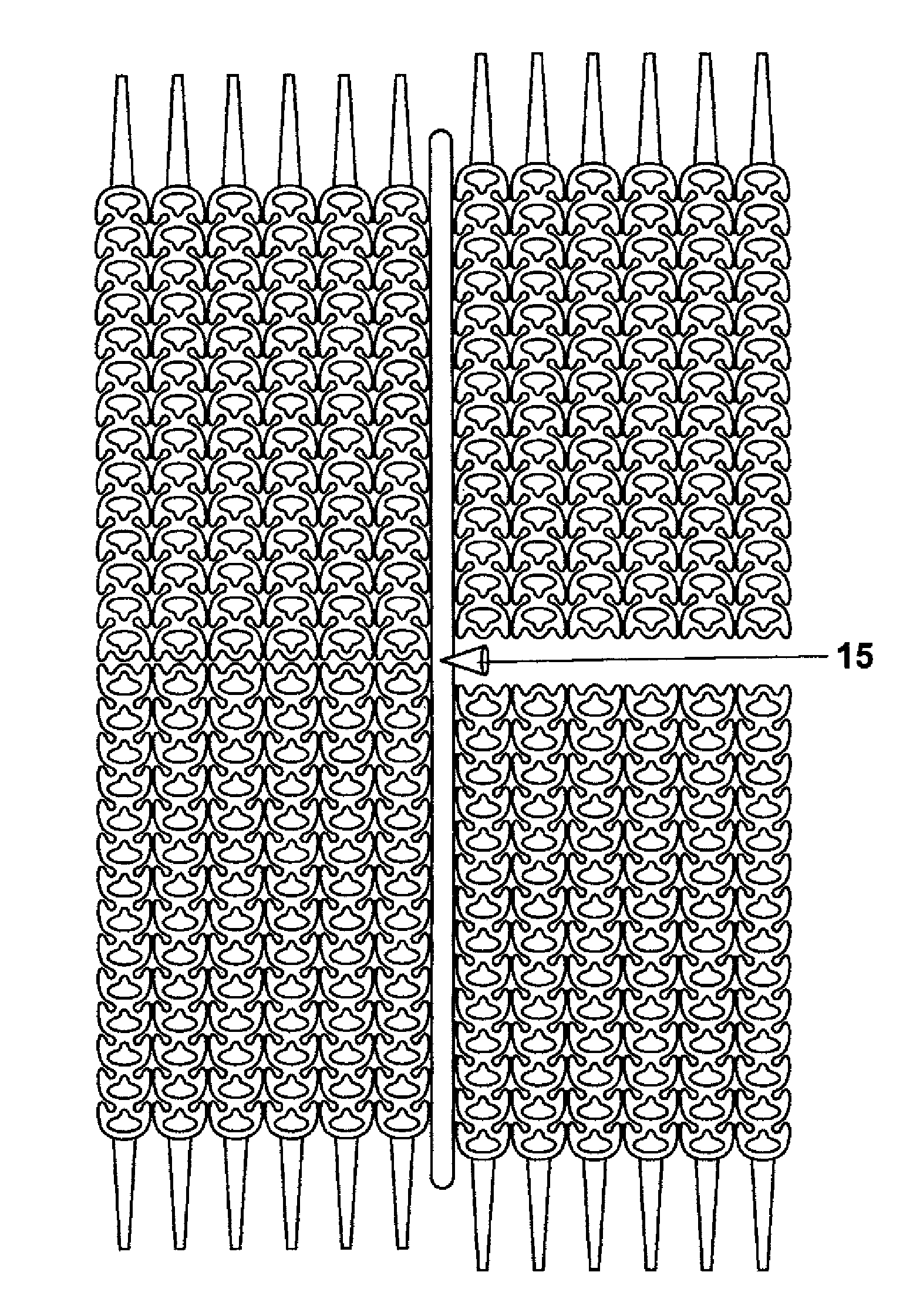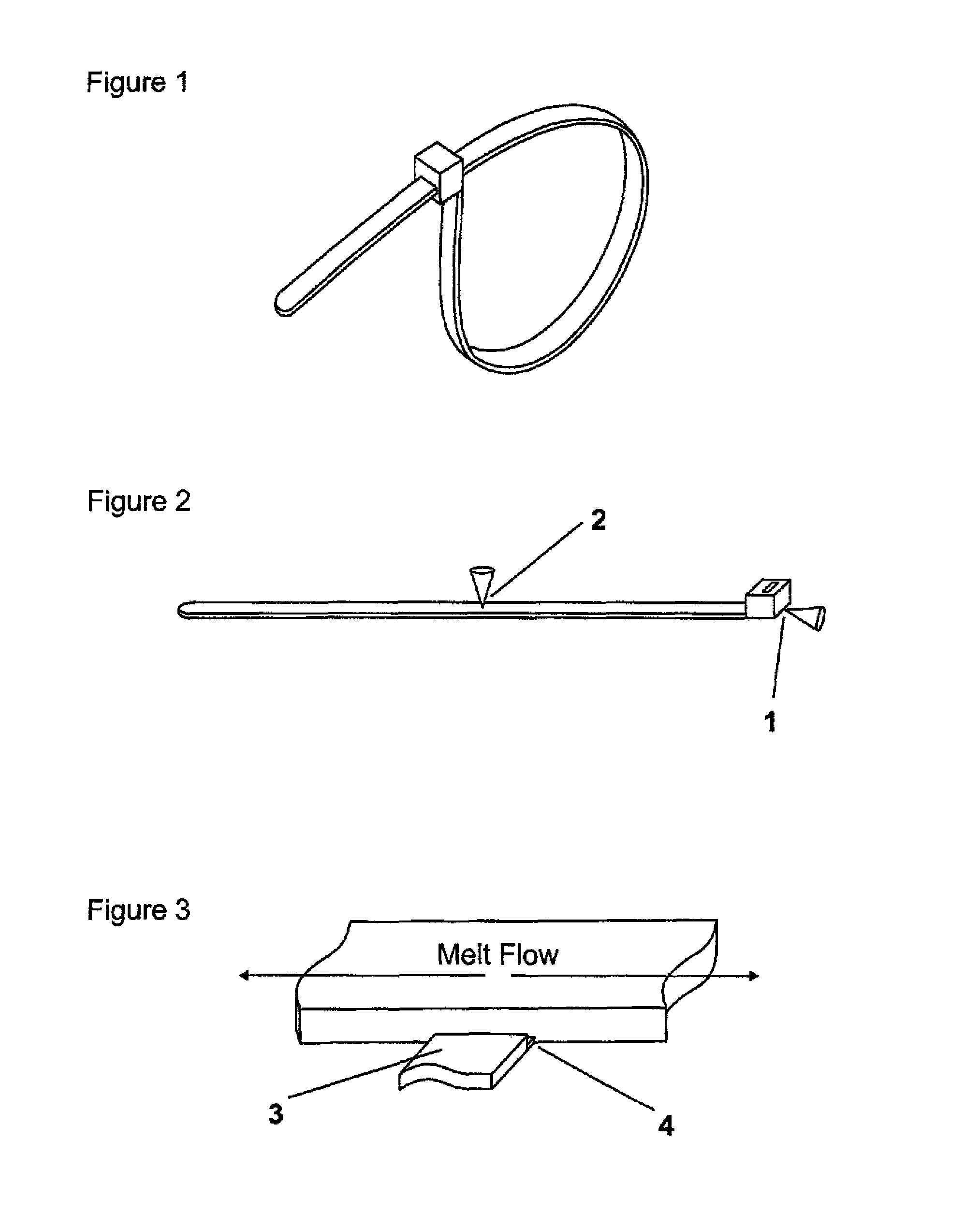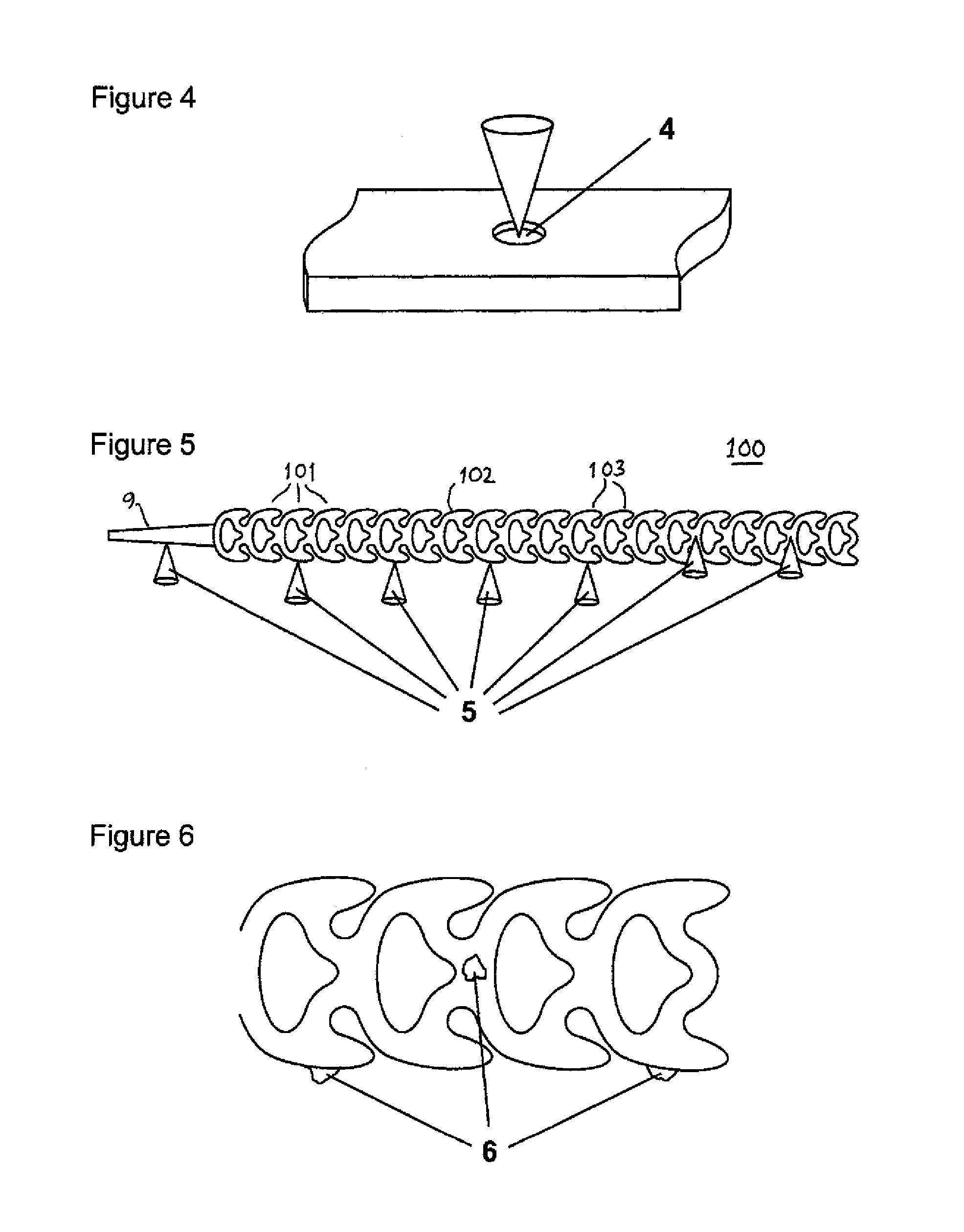Moulded tie strips
a technology of tie strips and moulding, which is applied in the direction of flexible elements, flexible covers, shaping presses, etc., can solve the problems of long and winding flow paths of polymer melt, manufacturing difficulties, and insufficient supply of these types of tie strips, and achieve the effect of facilitating their manufactur
- Summary
- Abstract
- Description
- Claims
- Application Information
AI Technical Summary
Benefits of technology
Problems solved by technology
Method used
Image
Examples
Embodiment Construction
[0036]FIG. 8 illustrates an embodiment of the invention in the form of a sheet of six identical tie strips as shown in FIG. 7 of WO 2004 / 108550, laid out side by side. Each tie strip 100 is made of a line of identical loop-shaped cells 101 through which the front end 9 of the strip can be passed, and each cell has rear-facing hooks or latching members to give a latching function. For the strip to be passed easily through a given cell, the thickness (depth) of the strip is small, and likewise the thickness of the cell walls 102 bounding the loops, which might typically be 10-20% of the width of the strip. The strips are typically made of polyurethane or physically similar material.
[0037]A sprue rod 10 at one side of the sheet illustrates the position of the runner during the moulding process, the runner typically having a main feed point 15 half-way along its length. The melt thus flows from right to left in the drawing through the sheet of strips. The mould walls between the closest...
PUM
| Property | Measurement | Unit |
|---|---|---|
| length | aaaaa | aaaaa |
| Shore hardness | aaaaa | aaaaa |
| widths | aaaaa | aaaaa |
Abstract
Description
Claims
Application Information
 Login to View More
Login to View More - R&D
- Intellectual Property
- Life Sciences
- Materials
- Tech Scout
- Unparalleled Data Quality
- Higher Quality Content
- 60% Fewer Hallucinations
Browse by: Latest US Patents, China's latest patents, Technical Efficacy Thesaurus, Application Domain, Technology Topic, Popular Technical Reports.
© 2025 PatSnap. All rights reserved.Legal|Privacy policy|Modern Slavery Act Transparency Statement|Sitemap|About US| Contact US: help@patsnap.com



